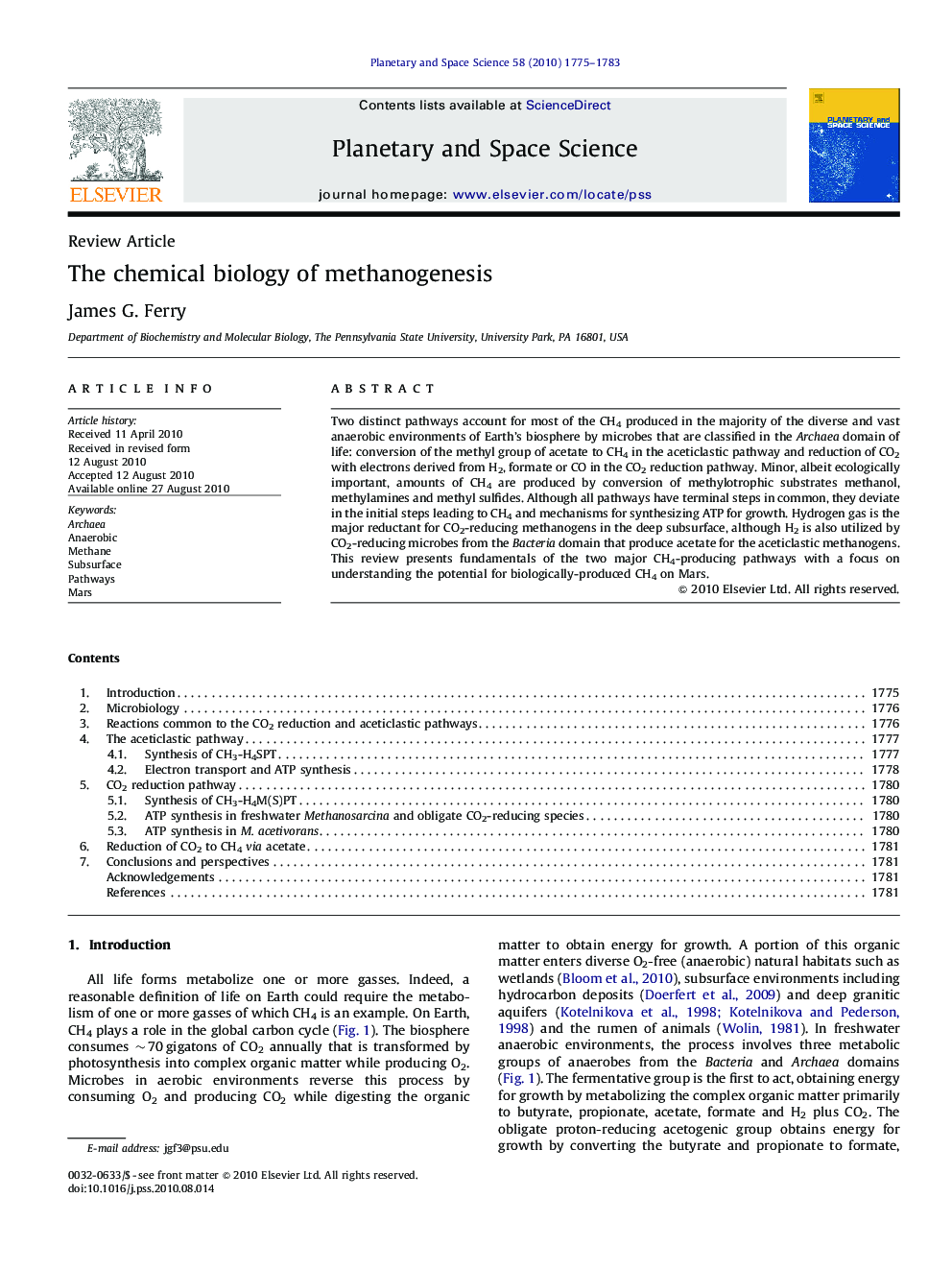| کد مقاله | کد نشریه | سال انتشار | مقاله انگلیسی | نسخه تمام متن |
|---|---|---|---|---|
| 1781639 | 1523966 | 2010 | 9 صفحه PDF | دانلود رایگان |

Two distinct pathways account for most of the CH4 produced in the majority of the diverse and vast anaerobic environments of Earth’s biosphere by microbes that are classified in the Archaea domain of life: conversion of the methyl group of acetate to CH4 in the aceticlastic pathway and reduction of CO2 with electrons derived from H2, formate or CO in the CO2 reduction pathway. Minor, albeit ecologically important, amounts of CH4 are produced by conversion of methylotrophic substrates methanol, methylamines and methyl sulfides. Although all pathways have terminal steps in common, they deviate in the initial steps leading to CH4 and mechanisms for synthesizing ATP for growth. Hydrogen gas is the major reductant for CO2-reducing methanogens in the deep subsurface, although H2 is also utilized by CO2-reducing microbes from the Bacteria domain that produce acetate for the aceticlastic methanogens. This review presents fundamentals of the two major CH4-producing pathways with a focus on understanding the potential for biologically-produced CH4 on Mars.
Research highlights
► All life forms metabolize one or more gasses
► Two distinct pathways account for most of the methane produced in Earth's anaerobic biosphere
► Methane-producing microbes evolved features distinct from all other life forms
► The search for life on Mars will likely be facilitated by an understanding of subsurface methane-producing ecosystems on Earth
Journal: Planetary and Space Science - Volume 58, Issues 14–15, December 2010, Pages 1775–1783